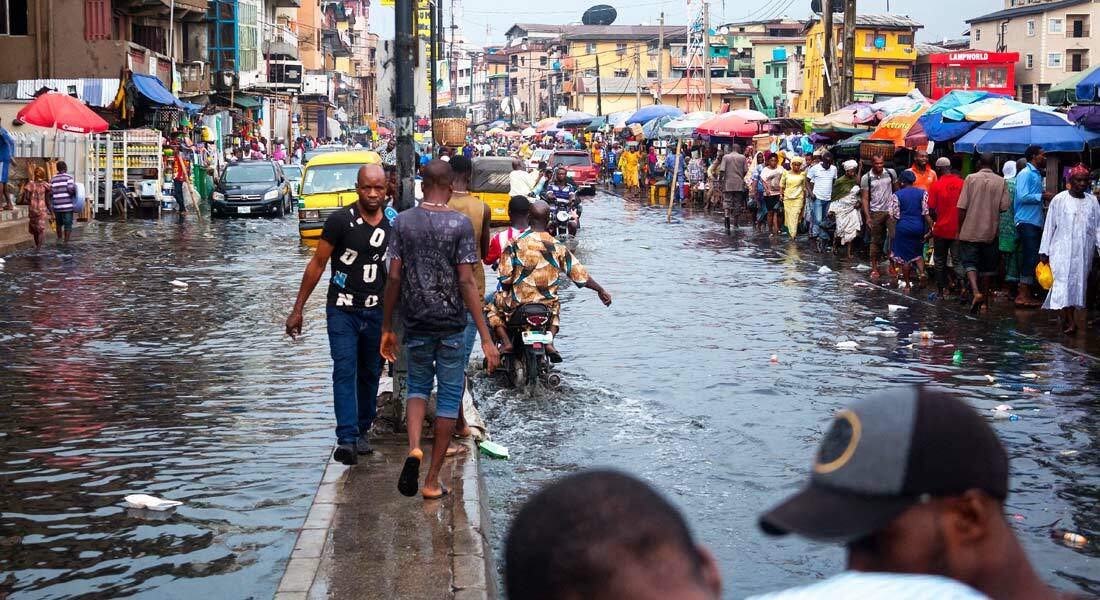Sign up to receive our latest COPE stories, events and news about education, research and opportunities.
Introduction to Disaster Risk Management and Climate Adaptation
This course is a part of

The course covers factors such as globalisation’s impact on vulnerability; socio-economic and political dimensions; and health aspects at the local level.
You will get an outline of historical perspectives of disaster risk management, the changing nature of humanitarian crises and disasters in fragile contexts. Vulnerability reduction and resilience building, climate change and forced migration are also included
Course content
- Disaster risk as an interaction of exposure and vulnerability rather than the hazard per se.
- Climate change adaptation and its impact on natural resources and livelihoods.
- Key concepts, frameworks and debates in the developing field of disaster risk management and climate change adaptation.
- Overview of the global landscape of actors and institutions within disaster risk management and climate change adaptation.
- The disaster-development-climate nexus.
- The role of health and health challenges in disaster risk management and climate change.
- The complex interaction between disaster preparedness, response and recovery, prevention.
Learning method
- Lectures - Imparting knowledge, concepts, theories and models.
- Exercises – Inquiry or skills based with emphasis on analytical skills and problem solving.
- Videos – Guided with a set of questions or an exercise that follows.
- Seminars – Self-directed by students and guided and mentored by tutors.
- Presentations – of group assignments and feedback by a panel of tutors.
- Paper – To develop academic writing skills and assessed by course leader.
For more details about the course, please refer to the course curriculum.
View all courses on:
Course director on »Introduction to Disaster Risk Management and Climate Adaptation«

Anne Bach Nielsen
Assistant Professor
Course information about »Introduction to Disaster Risk Management and Climate Adaptation«
Dates and examination
Course dates
1–19 September 2025
The course is available every year.
Examination
Please find the exam dates in the exam plan.
Learning outcomes
You will learn the concepts and theoretical foundations of disaster risk reduction and disaster risk management practices. You will gain insight into the complex connections between hazards and vulnerabilities, and understand how risk is contextually configured. Additionally, you will demonstrate knowledge of methods and tools for identifying and analyzing hazards and vulnerabilities.
On completion of the course, you will be able to:
-
demonstrate a critical and practical understanding of factors contributing to vulnerability, both locally and globally, and evaluate policies and practices that may increase vulnerability
-
master key concepts, theories, models, and principles relevant to disaster management and risk reduction
-
apply methods for risk analysis and risk evaluation, including tools for team-building, stress management, and intercultural communication.
Admission criteria
You must meet the following criteria to be admitted to this course:
- Hold a relevant bachelor degree or equivalent.
- Have a minimum 2 years of relevant job experience.
- Be proficient in English.
Find detailed information in the admission criteria on Master of Disaster Management.
Priority is given to enrolled students
This course is offered as a compulsory course in the Master of Disaster Management programme. Priority is given to students already enrolled. Once the enrolled students have been admitted to the course, the remaining seats are distributed on a first-come, first-served basis.
Tuition fees
EEU/EEA citizens
Master student: 16,500 DKK
Single course student: 25,000 DKK
Non-EU/EEA citizens
Master student: 22,000 DKK
Single course student: 33,000 DKK
More information
All course information is available in the course curriculum:Place
University of Copenhagen
City Campus
Øster Farimagsgade 5
1353 Copenhagen K
Denmark
Contact
Christine Gulstad
Study Administration Officer
lifelonglearning@adm.ku.dk
Tel: +45 35 32 12 73
